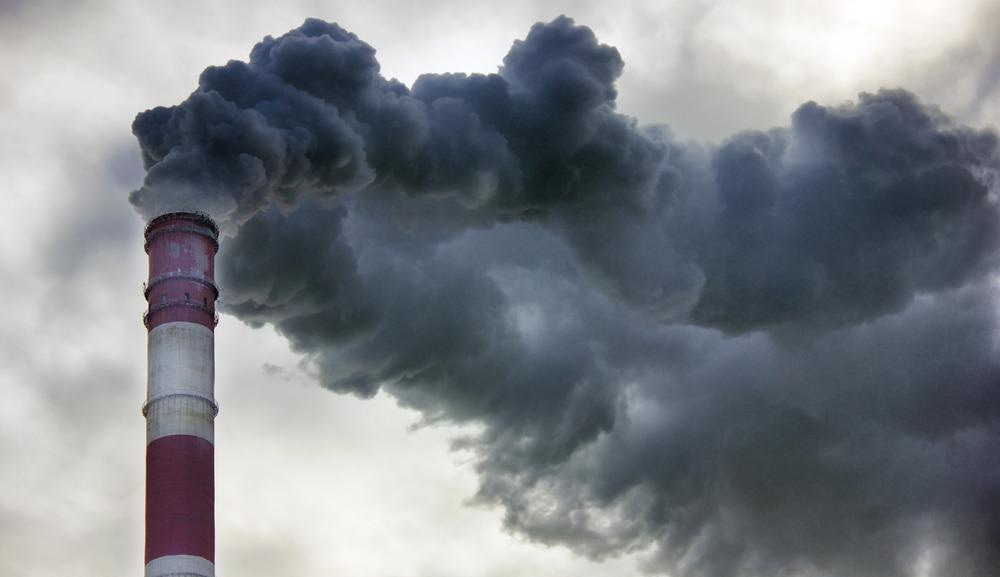As of 2019, an estimated 36.44 billion metric tons of carbon dioxide (CO2) were released into the global atmosphere. CO2, which comprises 65% of all the greenhouse gases (GHG) that are emitted into the environment each year, is primarily released into the environment as a result of fossil fuel use. However, other sources of CO2 emissions include deforestation, land clearing for agriculture, and the degradation of soils.

Image Credit: Anastasiia Tymoshenko/Shutterstock.com
Although various natural processes, such as plant photosynthesis, can absorb some of the excess CO2 emissions that are released into the environment due to human activities, the rate of CO2 emissions has significantly exceeded the capacity of these processes to absorb carbon since around 1950. As a result, CO2 remains in the environment and produces an increase in the average surface temperature of Earth over time. These rising temperatures can subsequently alter precipitation patterns, the severity of various storms, and sea level, all of which are key components of the phenomenon known as global warming.
The Carbon Footprint of Concrete
Other than water, concrete is the second most-consumed resource in the world. Cement, which is the key ingredient in concrete, accounts for approximately 8% of the global CO2 emissions. If the cement industry was viewed as its own nation, it would be the third-largest emitter of CO2 in the world after China and the United States.
The production of Portland cement involves a process known as quarrying, which generates airborne pollution in the form of dust. Quarrying also requires massive kilns that consume a considerable amount of energy, further increasing the energy demand of this industry. The chemical process of developing cement is also associated with its own CO2 emissions.
Importantly, considerable progress has been made by the concrete industry to reduce its carbon footprint. For example, several concrete manufacturers have transitioned to burning waste materials rather than fossil fuels to power their plants. By doing so, the concrete industry has reduced its overall CO2 emissions by up to 18% over the past several decades.
Despite these efforts, there remains an urgent need to reduce the environmental impact that concrete production has on the world.
What is Carbon Upcycling?
To reduce the impact of CO2 emissions on the globe, numerous clean technologies have been developed. One example of such a technology is known as carbon upcycling, which was originally developed by Carbon Upcycling Technologies, based in Calgary, Canada.
The basic working principle behind Carbon Upcycling technology is that industrial byproducts such as fly ash, crushed glass, steel slag, graphite, and talc are made into concretes with a low CO2 footprint.
Video Credit: Carbon Upcycling Technologies/YouTube.com
This circular economy approach begins with the loading of these byproducts into pressurized reactors where the particles are broken down until they are extremely fine. CO2 is then sequestered through these particles and ultimately transferred to a concrete manufacturer who develops the final concrete product. Although Carbon Upcycling originally began with reactors that were the size of a cookie jar, they are now equipped with reactors that are large enough to produce up to 8 tons of material each day.
An additional benefit of this process is achieved using Carbon Upcycling’s enhanced supplementary cementitious materials (SCMs). This additive can reduce up to 20% of the cement that would normally be used in a traditional concrete mix while simultaneously improving the strength and durability of the final cement product. Using SCMs also significantly reduces the cost associated with manufacturing concrete.
Creating a Circular Economy
By definition, a circular economy is a model of both goods production and consumption that involves the sharing, reuse, repairing, repurposing, leasing, and recycling of existing materials. Ultimately, the primary goal of a circular economy is to not only extend the lifespan of existing products but also reduce waste to a minimum.
To this end, Carbon Upcycling Technologies is a clear example of a circular economy. Rather than discarding products such as fly ash that are normally considered waste from coal-burning processes, carbon upcycling instead finds a way to repurpose these items while simultaneously reducing the impact of these waste materials on the environment.
References and Further Reading
EPA. (n.d) Global Greenhouse Gas Emissions Data [Online] Available at: https://www.epa.gov/ghgemissions/global-greenhouse-gas-emissions-data (Accessed on 23 September 2021).
Eia (2020) Energy and the environment explained [Online] Available at: https://www.eia.gov/energyexplained/energy-and-the-environment/greenhouse-gases-and-the-climate.php (Accessed on 23 September 2021).
Carbon Upcycling Technologies (n.d) Company Story [Online] Available at: https://carbonupcycling.com/ (Accessed on 23 September 2021).
Rodgers, L. (2018) Climate change: The massive CO2 emitter you may not know about [Online] BBC. Available at: https://www.bbc.com/news/science-environment-46455844 (Accessed on 23 September 2021).
Disclaimer: The views expressed here are those of the author expressed in their private capacity and do not necessarily represent the views of AZoM.com Limited T/A AZoNetwork the owner and operator of this website. This disclaimer forms part of the Terms and conditions of use of this website.